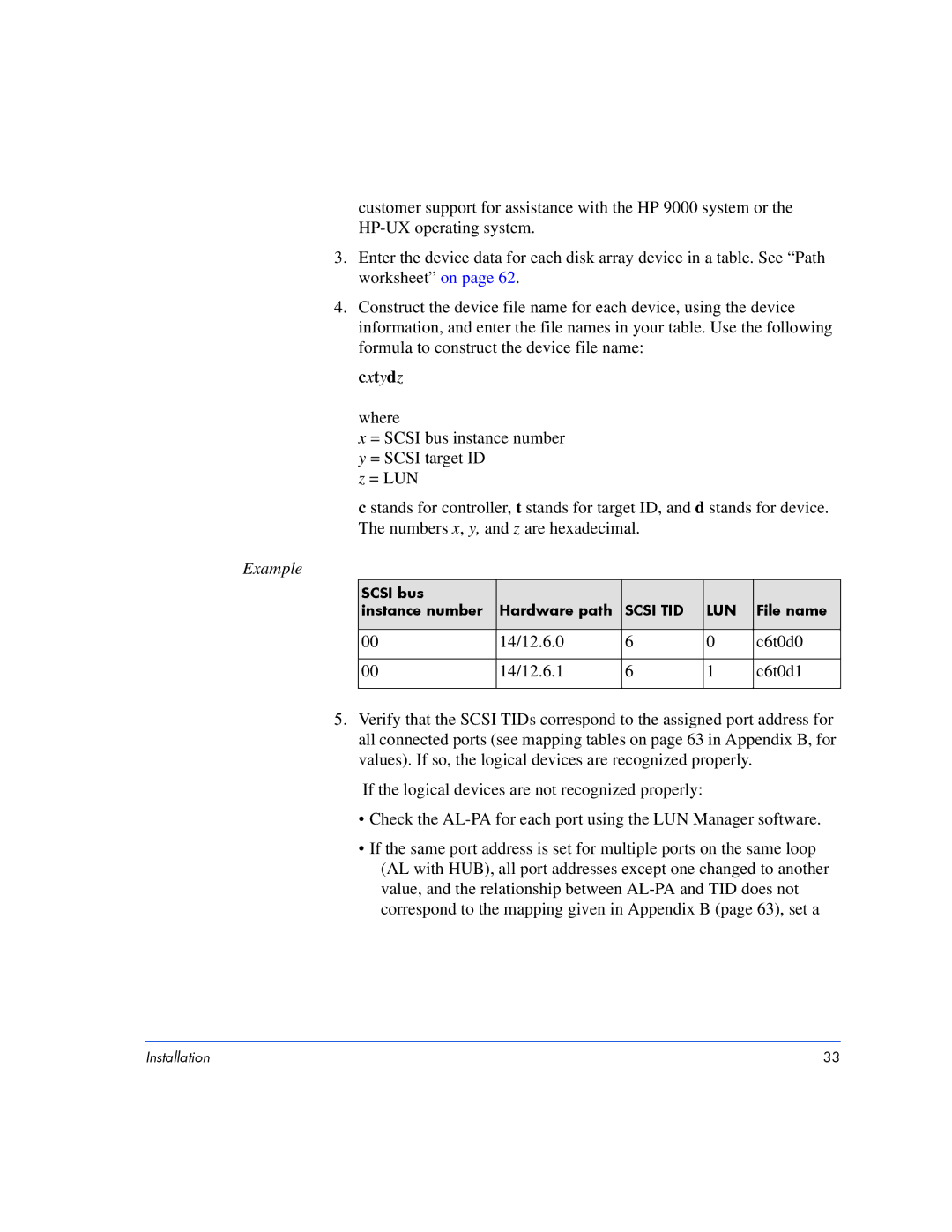customer support for assistance with the HP 9000 system or the
3.Enter the device data for each disk array device in a table. See “Path worksheet” on page 62.
4.Construct the device file name for each device, using the device information, and enter the file names in your table. Use the following formula to construct the device file name:
cxtydz where
x= SCSI bus instance number
y= SCSI target ID
z= LUN
c stands for controller, t stands for target ID, and d stands for device. The numbers x, y, and z are hexadecimal.
Example
SCSI bus |
|
|
|
|
instance number | Hardware path | SCSI TID | LUN | File name |
|
|
|
|
|
00 | 14/12.6.0 | 6 | 0 | c6t0d0 |
|
|
|
|
|
00 | 14/12.6.1 | 6 | 1 | c6t0d1 |
|
|
|
|
|
5.Verify that the SCSI TIDs correspond to the assigned port address for all connected ports (see mapping tables on page 63 in Appendix B, for values). If so, the logical devices are recognized properly.
If the logical devices are not recognized properly:
•Check the
•If the same port address is set for multiple ports on the same loop (AL with HUB), all port addresses except one changed to another value, and the relationship between
Installation | 33 |
